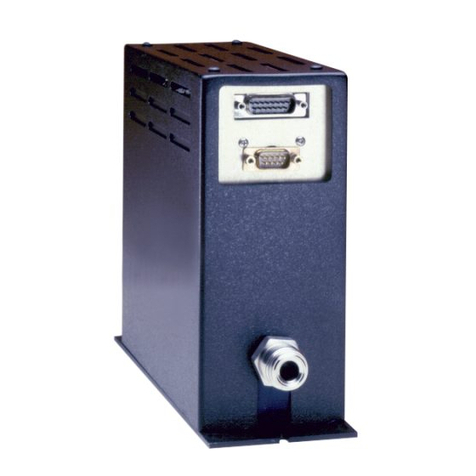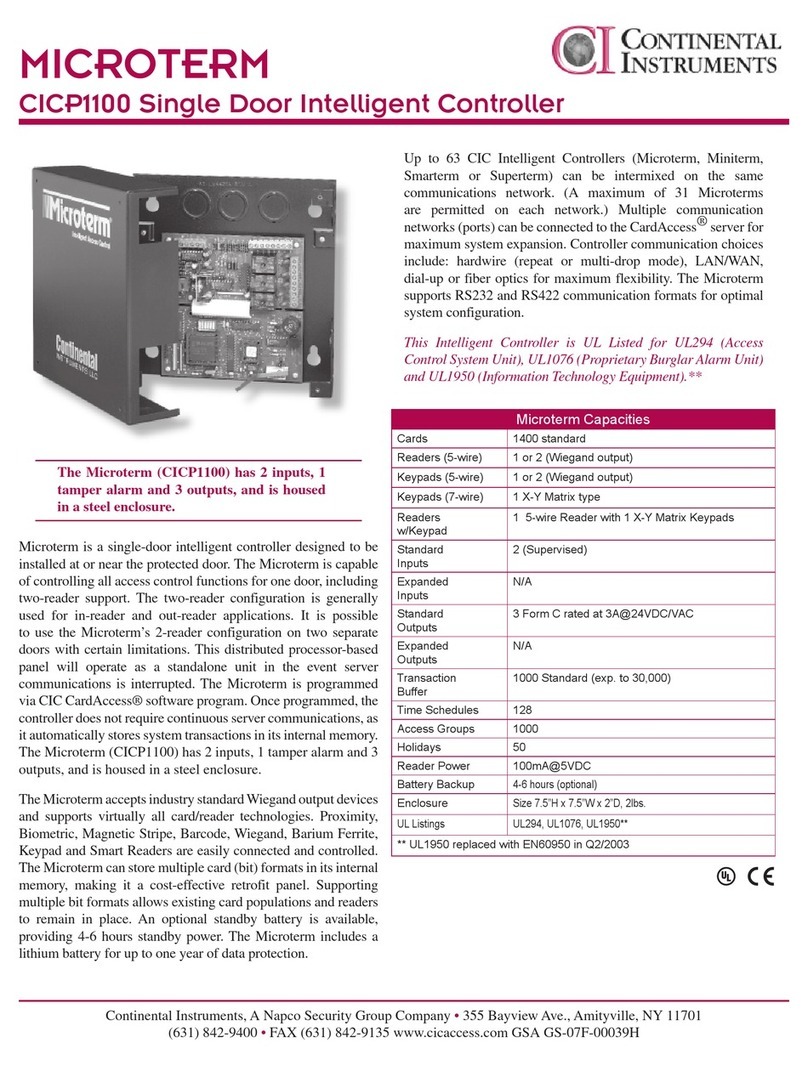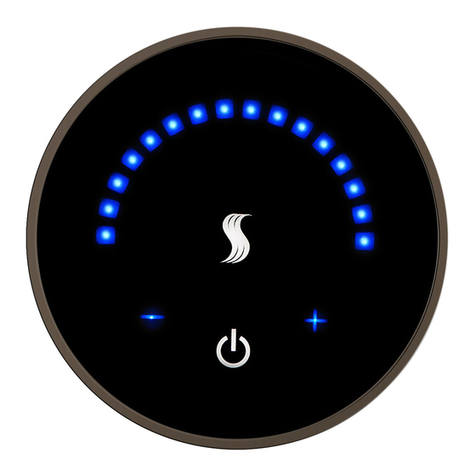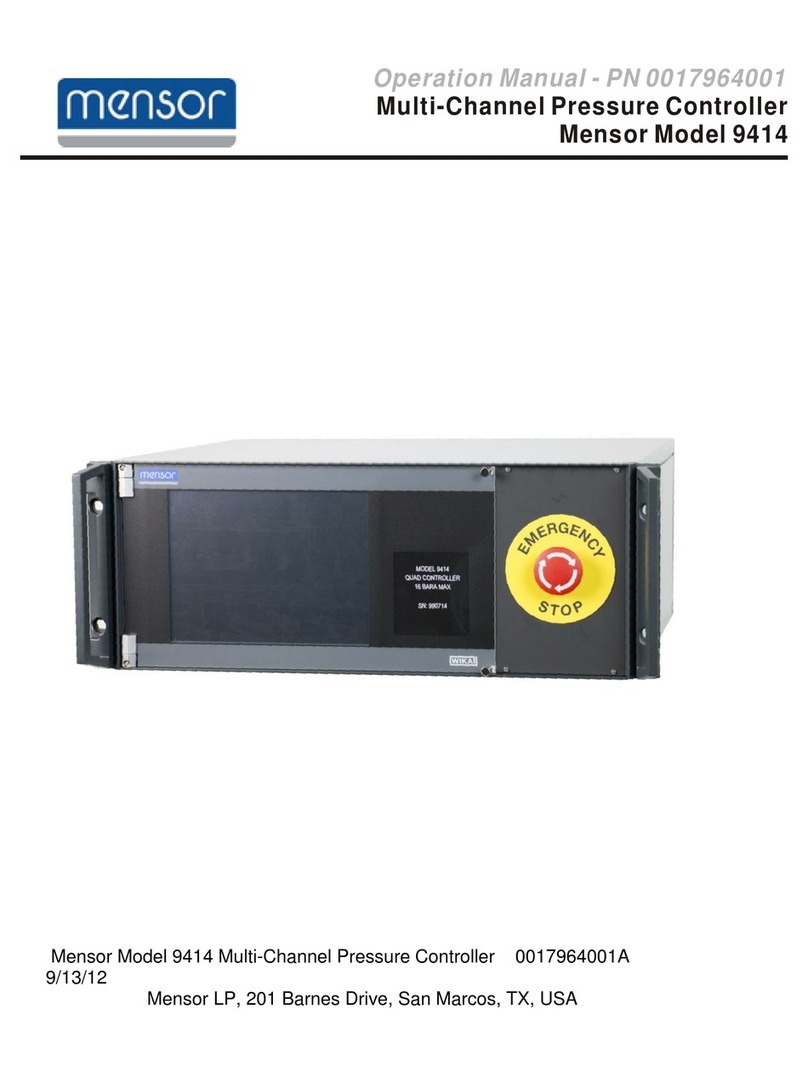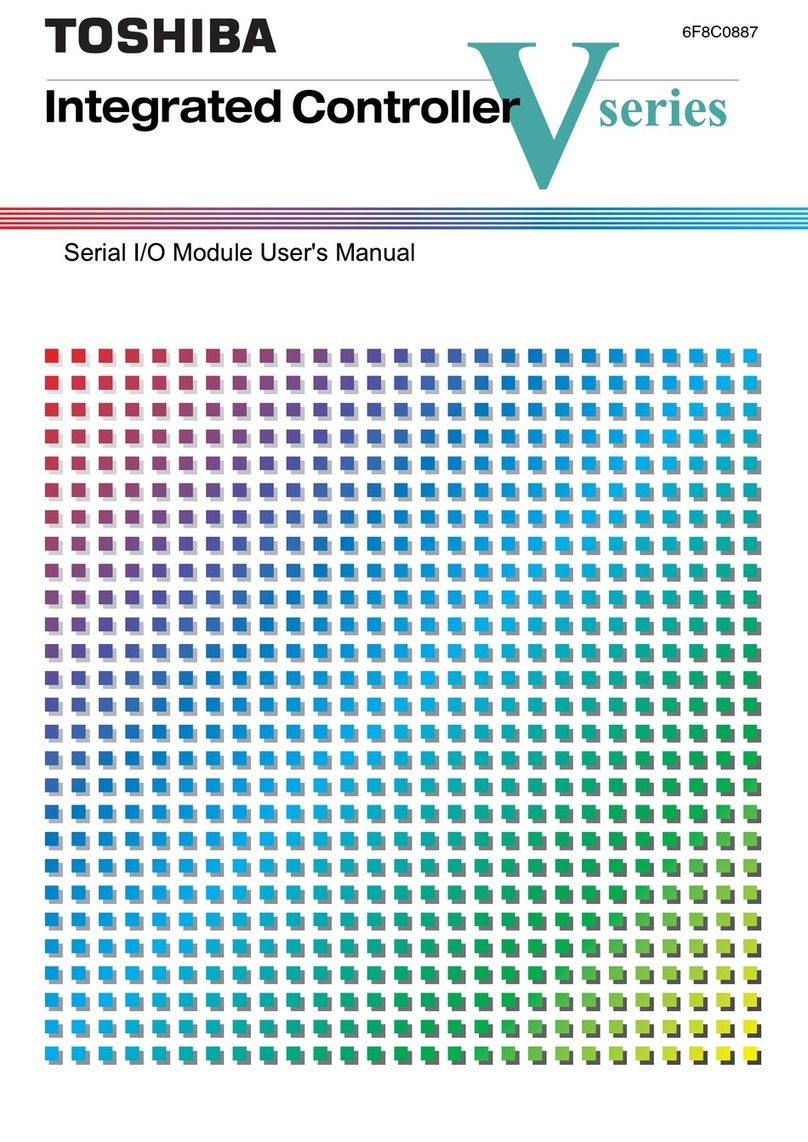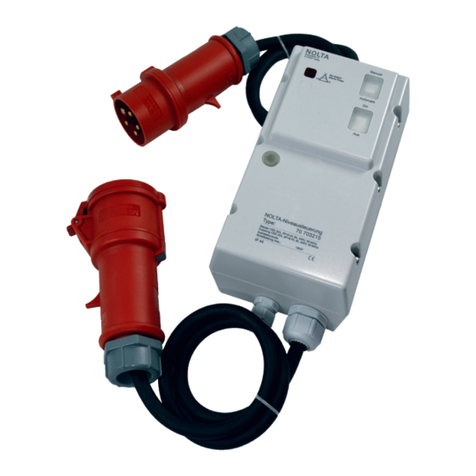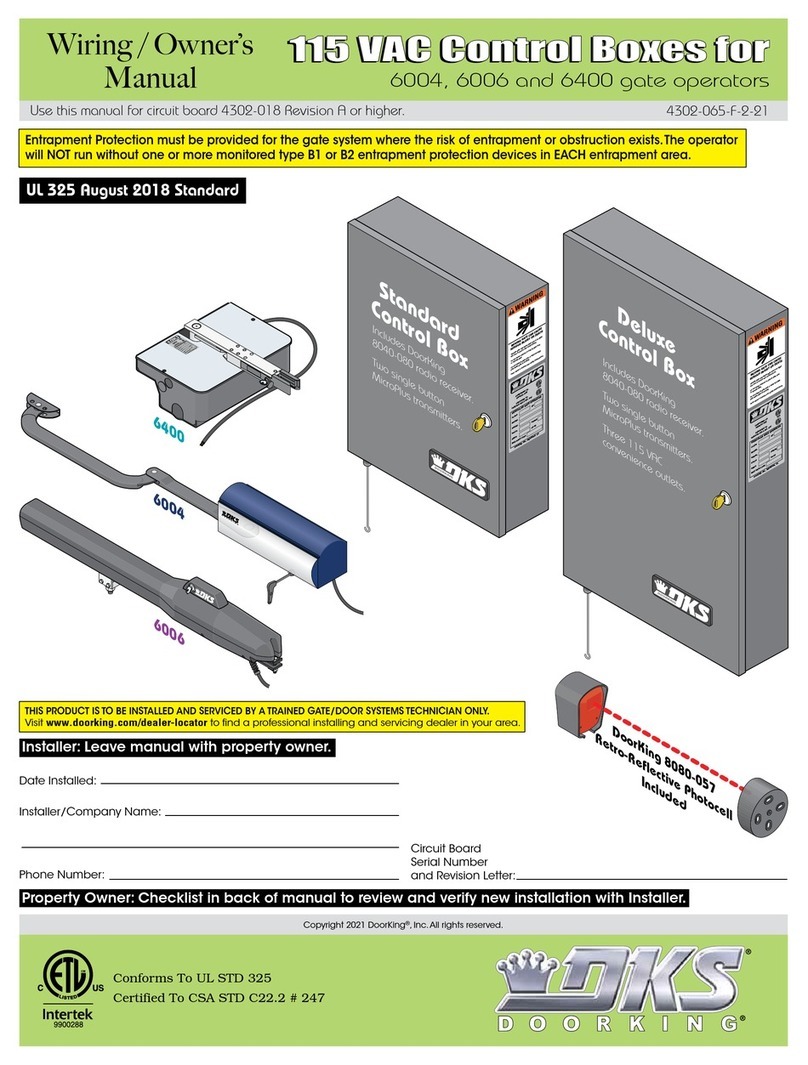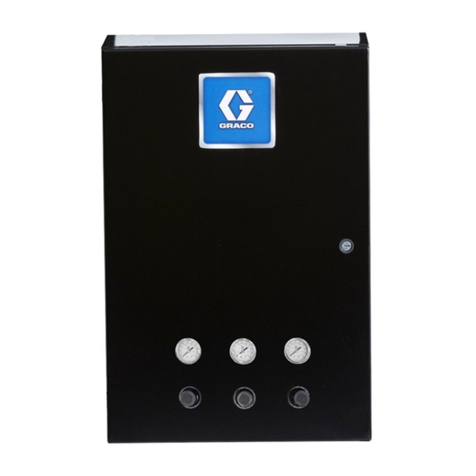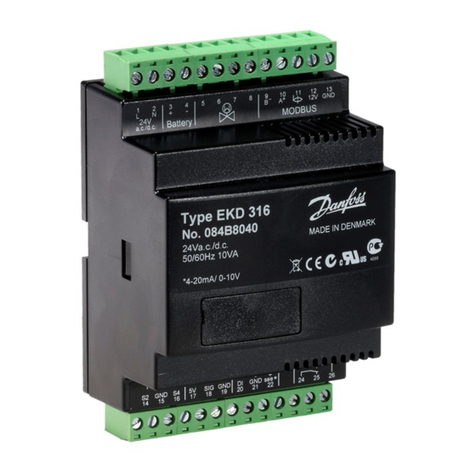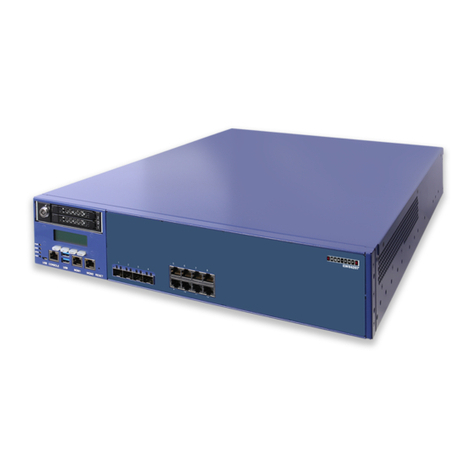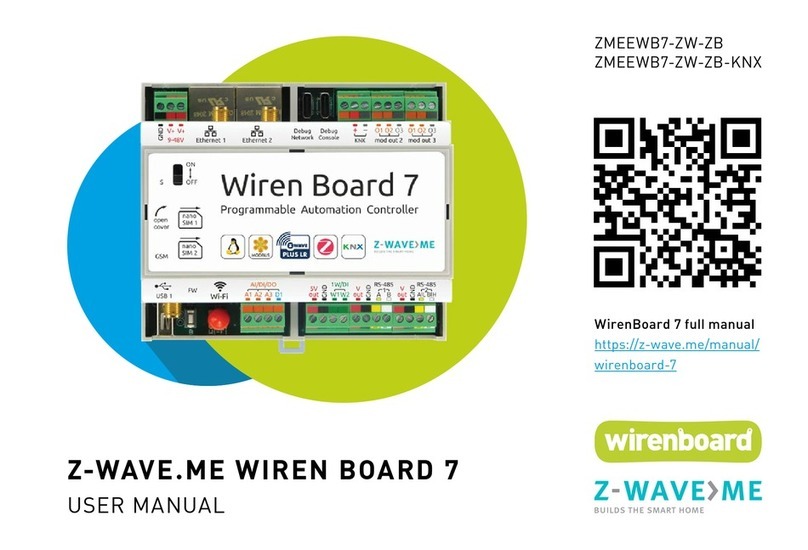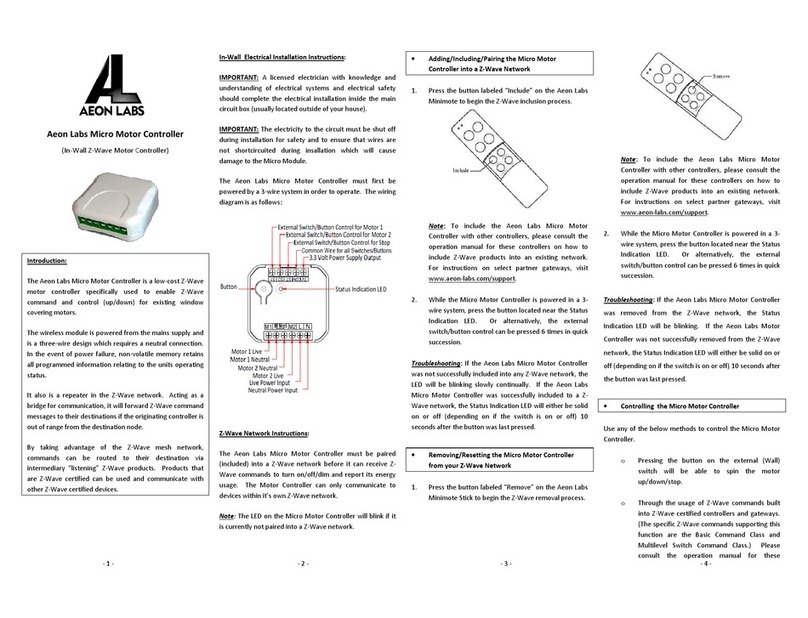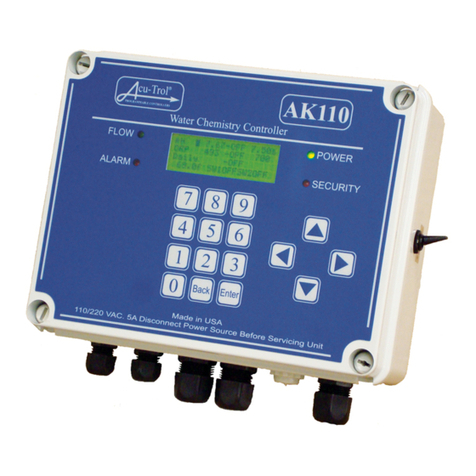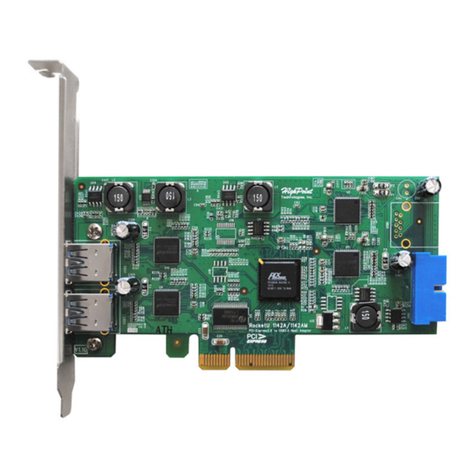Penny&Giles Solo Series Instruction Manual

1998 Penny & Giles Drives Technology Ltd.
Solo Series
Motor Controller
OPERATIONAND
INSTALLATION
SK74484/1


PENNY+GILES DRIVES TECHNOLOGY CONTENTS
Solo Technical Manual SK74484/1 iii
CONTENTS
CONTENTS.......................................................iii
Chapter 1
OPERATION...................................................... 7
1.0 Introduction.............................................................7
2.0 General......................................................................8
2.1 Handling..................................................................8
2.2 Operating Conditions.............................................8
3.0 Controls....................................................................8
3.1 On/Off Switch ........................................................8
3.2 Status Indicator........................................................9
3.3 Throttle....................................................................9
3.3.1 Wig-wag (center off) Throttle....................9
3.3.2 Single-ended Throttle.................................9
3.4 Reverse Switch..........................................................9
3.5 Speed Limiting Control..........................................9
3.6 Slow/Fast Switch...................................................10
3.7 Freewheel Switch....................................................10
3.8 Reverse Alarm........................................................10
4.0 Getting Ready to Drive.........................................10
5.0 Tips for Using Your Controller..........................11
5.1 Driving - General...................................................11
5.2 Driving Technique.................................................11
6.0 Precautions for Use...............................................11
6.1 Hazards..................................................................11
7.0 Safety Checks..........................................................12
7.1 Daily Checks...........................................................12
7.2 Weekly Checks........................................................13
7.3 Servicing..................................................................13
8.0 Status Indication....................................................13
8.1 Status Indicator Steady..........................................14
8.2 Status Indicator Flashes Slowly............................14
8.3 Status Indicator Flashes Rapidly...........................14
8.4 Self-Help Guide.....................................................14
Table 1 - Self Help Guide..............................................15
8.5 Slow or Sluggish Movement................................15
9.0 Pushing the Vehicle..............................................15
9.1 Using Freewheel Switch.........................................16
9.2 Disengaging the Parking Brake.............................16

CONTENTS PENNY & GILES DRIVES TECHNOLGY
iv Solo Technical Manual SK74484/1
10.0 Battery Gauge.........................................................16
10.1 How To Read a Single Bulb (or LED) Battery
Gauge.....................................................................17
10.2 How To Read a TruCharge Battery Gauge......17
11.0 Programming.........................................................18
12.0 Controller Servicing.............................................18
Chapter 2
INSTALLATION...............................................21
1.0 Documentation......................................................21
1.1 Solo Operation......................................................21
1.2 Program Settings...................................................21
1.3 Other Information................................................22
2.0 Immobilizing the Vehicle...................................22
2.1 Prevention of Unauthorized Use.........................22
2.2 Charger Interlock ...................................................22
3.0 Power Connections..............................................23
3.1 General...................................................................23
3.2 Battery Connections..............................................23
3.3 Motor Connections...............................................24
3.4 Wire Gauge and Types..........................................24
4.0 Batteries..................................................................24
5.0 Motors.....................................................................25
6.0 Control Connections............................................25
Fig 1 - Connection Diagram for Wig-Wag Throttle.26
Fig 2 - Connection Diagram for Single Ended Throttle
..................................................................................27
6.1 Throttle Potentiometer.........................................28
6.1.1 Speed Limiting Potentiometer.................28
6.1.2 Alternative Throttle Inputs......................28
6.2 0 Volts....................................................................28
6.3 On/Off Switch ......................................................29
6.4 Inhibit....................................................................29
6.5 Slow/Fast...............................................................29
6.6 Freewheel................................................................29
6.7 Reverse....................................................................30
6.8 Batt+ (Soft Stop)...................................................30
6.9 Reverse Alarm........................................................31
6.10 Status Indicator.................................................31
6.11 Solenoid Brake...................................................31
7.0 Mounting................................................................32
7.1 Orientation.............................................................32
7.2 Position..................................................................32
7.3 Cables .....................................................................32
8.0 Production Tests...................................................32
8.1 Mounting...............................................................32

PENNY+GILES DRIVES TECHNOLOGY CONTENTS
Solo Technical Manual SK74484/1 v
8.2 Cables and Connectors..........................................32
8.3 Preset Settings........................................................33
8.4 Operational Test....................................................33
8.5 Test Drive...............................................................33
9.0 Electromagnetic Compatibility (EMC).........33
9.1 Emissions..............................................................34
9.1.1 Motor suppression.....................................34
9.1.2 Cables..........................................................34
9.2 Immunity...............................................................34
9.3 Electro-Static Discharge (E.S.D.)..........................35
10.0 Battery Gauge........................................................35
Chapter 3
Tiller Module Installation....................................37
1.0 Introduction...........................................................37
2.0 Mounting................................................................37
2.1 Handling................................................................37
2.2 Fixing......................................................................37
Fig 3 - Suggested fixing holes..........................................38
2.3 Sealing.....................................................................38
3.0 Wiring.....................................................................38
3.1 Soldering................................................................39
3.2 Connectors.............................................................39
3.3 Wire Gauge............................................................39
4.0 Connections...........................................................39
4.1 Connection Identification.....................................39
Fig 4 - Connector Positions.............................................40
4.2 Tiller Module Version - TruCharge Indicator and
Diagnostics.............................................................40
4.3 Tiller Module Version - Momentary Switch Inputs
40
4.4 Tiller Module Version - TruCharge Indicator and
Diagnostics and Momentary Switch Inputs........42
5.0 Electromagnetic Compatibility (EMC)..........42
5.1 Immunity and Emissions....................................42
5.2 Electro-Static Discharge (E.S.D.)..........................43
6.0 Production Tests...................................................43
6.1 Mounting...............................................................43
6.2 Cables and Connections........................................44
6.3 Operational Tests..................................................44
6.3.1 TruCharge Display Function..................44
6.3.2 Switch and LED functions........................44


PENNY+GILES DRIVES TECHNOLOGY OPERATION
Solo Technical Manual SK74484/1 Chapter 1: 7
OPERATION
1.0 Introduction
The relevant contents of this chapter may be included in the
vehicle’s operating guide. Further copies are available from Penny &
Giles in both written or disk (Word for Windows*) format.
Copies should not be made without the express permission of
Penny & Giles.
The operation of the Solo series of controllers is simple and easy to
understand. The controller incorporates state-of-the-art electronics,
the result of many years of research, to provide you with ease of use
and a very high level of safety. In common with other electronic
equipment, correct handling and operation of the unit will ensure
maximum reliability.
Please read this user chapter carefully - it will help to keep the
vehicle reliable and safe.
*trademark gratefully acknowledged
Chapter
1

OPERATION PENNY & GILES DRIVES TECHNOLGY
Chapter 1: 8Solo Technical Manual SK74484/1
2.0 General
2.1 Handling
Avoid knocking your controller, especially the connectors.
Never drop the controller.
When transporting, make sure that the controller is well protected.
Avoid damage to cables.
2.2 Operating Conditions
Your controller uses industrial-grade components throughout,
ensuring reliable operation in a wide range of conditions. However,
you will improve the reliability of the controller if you keep
exposure to extreme conditions to a minimum.
Do not expose your controller or its components to damp for
prolonged periods.
3.0 Controls
Depending on the specification of vehicle to which the Solo is
fitted, some or all of the following controls will be used.
3.1 On/Off Switch
The on/off switch applies power to the controller electronics,
which in turn supply power to the motor. Do not use the on/off
power switch to stop the vehicle unless there is an emergency. (If
you do, you may shorten the life of the vehicle drive components).
Note
some vehicles may have a keyswitch in addition to the normal
on/off switch, the function of the keyswitch is the same as the
on/off switch.

PENNY+GILES DRIVES TECHNOLOGY OPERATION
Solo Technical Manual SK74484/1 Chapter 1: 9
3.2 Status Indicator
Depending on the vehicle, the status indicator may be a single bulb
(or LED) or a Penny & Giles TruCharge battery and diagnostics
indicator.
The status indicator shows you that the vehicle is switched on. It
also indicates the operating status of the vehicle. Details are given in
section 8.0.
3.3 Throttle
The throttle controls the speed of the vehicle. The further you
push the throttle, the faster the vehicle will move. When you
release the throttle the brake is automatically applied.
The throttle configuration may be one of two types - wig-wag
(center off) or single-ended.
3.3.1 Wig-wag (center off) Throttle
In this configuration, both the speed and the direction of
the vehicle are controlled by the throttle. To drive
forwards, push the throttle in one direction: to drive in
reverse, push the throttle in the other direction.
3.3.2 Single-ended Throttle
In this configuration, just the speed of the vehicle is
controlled by the throttle. When the throttle is pushed -
depending on the position of the reverse switch (see
section 3.4) - the vehicle will drive in either the forward
or reverse direction.
3.4 Reverse Switch
This switch will only be fitted to the vehicle if the throttle
configuration is single-ended (see section 3.3.2). The switch is used
to change between forward and reverse drive.
3.5 Speed Limiting Control
This control sets the maximum speed of the vehicle. Turn the
knob clockwise to increase the maximum speed setting or anti-
clockwise to decrease the maximum speed setting.

OPERATION PENNY & GILES DRIVES TECHNOLGY
Chapter 1: 10 Solo Technical Manual SK74484/1
3.6 Slow/Fast Switch
This switch selects one of two driving modes - either ‘slow’ or
‘fast.’ You can use this switch to change the vehicle’s driving
behavior in environments where that may be desirable or necessary,
e.g. for working in confined areas, a slow acceleration and top speed
mode can be set or if traveling long distances, high top speed and
acceleration may be desirable.
3.7 Freewheel Switch
This switch allows you to push the vehicle without having to
mechanically disengage the parking brake. Whilst this switch is
operated, the controller will not allow drive and the speed at which
the vehicle can be pushed will be limited to 75% of the maximum
driving speed.
If you operate this switch whilst you are driving, the controller will
stop the vehicle and signal a fault.
3.8 Reverse Alarm
This provides an audible warning when the vehicle is being driven
in the reverse direction.
4.0 Getting Ready to Drive
Check that the speed limiting control is turned to a position which
suits you.
Operate the on/off switch. A TruCharge type status indicator will
blink and turn on after half a second. A single bulb (or LED) type
status indicator will turn on immediately.
If the vehicle has a single-ended throttle, use the reverse switch to
select the direction you want to drive and then push the throttle to
control the speed. If the vehicle has a wig-wag throttle, push the
throttle in the direction you want to drive.
During the first half-second after the vehicle is switched on, the
controller is performing important safety checks within itself and
the rest of the vehicle’s electrical system. Therefore, if you push the
throttle during this time, you will not be able to drive until you
have returned the throttle to the rest position. This condition is

PENNY+GILES DRIVES TECHNOLOGY OPERATION
Solo Technical Manual SK74484/1 Chapter 1: 11
indicated on a single bulb (or LED) type status indicator by a rapid
flashing, or on a TruCharge type status indicator by a “rippling “
up and down of the battery gauge.
If you do not push the throttle as you switch the vehicle on and
the status indicator flashes rapidly, then there may be a fault. Refer
to section 8.4 for details.
5.0 Tips for Using Your Controller
5.1 Driving - General
Make sure that all the controls are within easy reach and are
comfortable to operate.
5.2 Driving Technique
The controller interprets the throttle movements and reverse
switch setting (if fitted) and drives the vehicle in the correct
direction at the appropriate speed.
The further you push the throttle away from the rest position, the
faster the vehicle will go.
The intelligent speed control system minimizes the effects of
slopes and different types of terrain.
6.0 Precautions for Use
Note
In the event of the vehicle moving in an unexpected way
release the throttle. This action will stop the vehicle in any
circumstances.
6.1 Hazards
Do not drive the vehicle:

OPERATION PENNY & GILES DRIVES TECHNOLGY
Chapter 1: 12 Solo Technical Manual SK74484/1
i) beyond restrictions indicated in the vehicle’s user
manual.
ii) in places or on surfaces where a loss of wheel grip
could be hazardous, for example on wet or steep
slopes.
iii) if you know that the controller or other crucial
components require repair.
WARNING
Although the Solo is designed to be extremely reliable and
each unit is rigorously tested during manufacture, the
possibility of system malfunction always exists (however
small the probability). Under some conditions of system
malfunction the controller must (for safety reasons) stop the
vehicle instantaneously. Penny & Giles accept no liability for
losses of any kind arising from the unexpected stopping of the
vehicle, or arising from the improper use of the vehicle or
controller.
7.0 Safety Checks
The electronic circuits in the Solo have been designed to be
extremely safe and reliable. The on-board microcomputer carries
out safety checks at up to 100 times per second. To supplement
this safety monitoring you should carry out the following periodic
checks.
If the control system fails any of these checks, do not use the
vehicle and contact your service agent.
7.1 Daily Checks
Throttle: With the vehicle switched off, check that the throttle
mechanism is not bent or damaged and that it returns to the rest
position when you push and release it. If there is a problem do not
continue with the safety checks and contact your service agent.
+

PENNY+GILES DRIVES TECHNOLOGY OPERATION
Solo Technical Manual SK74484/1 Chapter 1: 13
7.2 Weekly Checks
Throttle: Put the throttle to the full speed forward position and
switch the vehicle on. The vehicle should not move. To show you
that you have switched the vehicle on with the throttle already
pushed, a TruCharge type status indicator will “ripple” up and
down, whereas a single bulb (or LED) type status indicator will
flash rapidly.
If the vehicle does move, contact your service agent.
Parking brake: This test should be carried out on a level surface
with at least one meter clear space around the vehicle:
i) Switch the vehicle on.
ii) Check that the status indicator remains on, or flashes
slowly, after half a second.
iii) Start to drive the vehicle slowly in the forwards
direction until you hear the parking brake operate.
The vehicle may start to move.
iv) Immediately release the throttle. You must be able to
hear the parking brake operate within a few seconds.
v) Repeat the test in the reverse direction.
Cables and connectors: Check that all connectors on the vehicle
are securely mated, and ensure that all cables are free from damage.
7.3 Servicing
To ensure continued satisfactory service, we suggest you have your
vehicle and control system inspected by your service agent after a
period of one year from commencement of service. Contact your
service agent for details when the inspection is due.
8.0 Status Indication
Depending on the vehicle, the status indicator may be a single bulb
(or LED) or a TruCharge battery gauge and diagnostics display.
Both types indicate the status of the controller. See section 10 for
more details of TruCharge battery gauge.

OPERATION PENNY & GILES DRIVES TECHNOLGY
Chapter 1: 14 Solo Technical Manual SK74484/1
Please note that a number of supposedly faulty controllers returned
to Penny & Giles are subsequently found to operate correctly. This
indicates that many faults are due to problems on the vehicle rather
than within the controller.
8.1 Status Indicator Steady
This indicates that all is well.
8.2 Status Indicator Flashes Slowly
The controller is functioning correctly, but you should charge the
batteries as soon as possible.
8.3 Status Indicator Flashes Rapidly
The controller safety circuits have operated and the controller has
been prevented from moving the vehicle.
This indicates that there is a fault. Please follow this procedure:
i) Switch off the vehicle.
ii) Make sure that all connectors on the vehicle are mated
securely.
iii) Check the condition of the battery.
iv) If you can’t find the problem, try using the self-help
guide in section 8.4.
v) Switch the vehicle on again and try to drive. If the
safety circuits operate again, switch off and do not try
to use the vehicle. Contact your service agent.
8.4 Self-Help Guide
If a fault occurs and you have a vehicle fitted with a TruCharge
display, you can find out what has happened by counting the
number of bars that are flashing on the battery gauge.
Here is a list of self-help actions. Try to use this list before you
contact your service agent. Go to the number in the list which
matches the number of flashing bars and follow the instructions.

PENNY+GILES DRIVES TECHNOLOGY OPERATION
Solo Technical Manual SK74484/1 Chapter 1: 15
Table 1 - Self Help Guide
1 bar The battery needs charging or there is a bad connection
to the battery. Check all connections between the
controller and the battery. If the connections are good,
try charging the battery.
2 bars There is a bad connection to the motor. Check all
connections between the motor and the controller.
3 bars The motor has a short circuit to a battery connection.
Contact your service agent.
4 bars The freewheel switch or manual brake disengagement
mechanism are operated. Check the position of the
switch or lever.
5 bars Not used.
6 bars The controller is being inhibited from driving, this may
be because the battery charger is connected or a seat (if
fitted) is not in the driving position.
7 bars A throttle fault is indicated. Make sure the throttle is in
the rest position before switching on the vehicle.
8 bars A controller fault has been indicated. Contact your service
agent.
9 bars There is a bad connection to the parking brake. Check all
connections between the parking brake and the
controller.
10 bars An excessive voltage has been applied to the controller.
This is usually caused by a poor battery connection.
Check all connections between the battery and the
controller.
8.5 Slow or Sluggish Movement
If the vehicle does not travel at full speed and the battery condition
is good, check the position of the speed limiting control. If
adjusting the speed limiting control does not remedy the problem,
then there may be a non-hazardous fault. Contact your service
agent.
9.0 Pushing the Vehicle
Depending on the vehicle and the status of the controller, there are
different methods of easily pushing your vehicle.

OPERATION PENNY & GILES DRIVES TECHNOLGY
Chapter 1: 16 Solo Technical Manual SK74484/1
9.1 Using Freewheel Switch
If the vehicle is fitted with a freewheel switch then you can easily
push the vehicle by operating this switch with the vehicle switched
on. Whilst the switch is operated, the vehicle is prevented from
driving and the freewheel speed is limited to 75% of the maximum
driving speed.
9.2 Disengaging the Parking Brake
If the vehicle does not have a freewheel switch or the controller has
detected a fault, then to push the vehicle, you must mechanically
disengage the parking brake. Your vehicle may be fitted with a
special lever to do this.
Depending on the gear ratio between the motor and the drive
wheels, it may be difficult to push the vehicle. If it is, switch off the
vehicle and less force will then be required.
WARNING
If you have disengaged the brake and the controller has
detected a fault or the vehicle is switched off, then it may be
possible for the vehicle to freewheel at potentially dangerous
speeds. Therefore, do not push the vehicle up or down
inclines on which you cannot stop or hold the vehicle. Never
sit on the vehicle when the parking brake is disengaged.
Penny & Giles accept no liability for losses of any kind arising
from the vehicle being moved with the parking brake
disengaged.
10.0 Battery Gauge
Depending on the type of vehicle, the battery gauge may be a single
bulb (or LED) or a TruCharge display. How to read each type is
described in the following sections.
The battery gauge is included to let you know how much charge is
left in your batteries. The best way for you to use the gauge is to
learn how it behaves as you drive the vehicle. Like the fuel gauge in
a car, it is not completely accurate, but it will help you avoid
running out of “fuel”.
The battery gauge works in the following way:
+

PENNY+GILES DRIVES TECHNOLOGY OPERATION
Solo Technical Manual SK74484/1 Chapter 1: 17
When you switch on the controller, after half a second, the battery
gauge shows an estimate of the remaining battery charge.
The battery gauge gives you a more accurate reading about a minute
after you start driving the vehicle.
Note: When you replace worn out batteries, fit the type
recommended by the vehicle manufacturer. If you use another type,
the battery gauge may be inaccurate.
The amount of charge in your batteries depends on a number of
factors, including the way you use the vehicle, the temperature of
the batteries, their age and the way they are made. These factors will
affect the distance that can be traveled. All electric vehicle batteries
will gradually lose their capacity as they age.
The most important factor that reduces the life of your batteries is
the amount of charge you take from the batteries before you
recharge them. Battery life is also reduced by the number of times
you charge and discharge the batteries.
To make your batteries last longer, do not allow them to become
completely discharged. Always recharge your batteries promptly
after they are discharged.
If your battery gauge reading seems to fall more quickly than usual,
your batteries may be worn out.
10.1 How To Read a Single Bulb (or LED) Battery Gauge
If the battery gauge is steady then you have more than 20% battery
charge remaining.
If the battery gauge is flashing slowly then you have less than 20%
battery charge remaining and you should charge the batteries as
soon as possible.
10.2 How To Read a TruCharge Battery Gauge
If the battery gauge shows red, yellow and green, the batteries are
charged.
If the battery gauges show just red and yellow, then you should
charge the batteries as soon as you can.

OPERATION PENNY & GILES DRIVES TECHNOLGY
Chapter 1: 18 Solo Technical Manual SK74484/1
If the battery gauge shows just red, either steady or flashing slowly,
then you should charge the batteries immediately.
11.0 Programming
If you find that you cannot find a position of the speed limiting
control that suits you, the controller can be programmed to meet
your needs.
The SP1 is a small hand-held unit which can be plugged into your
controller to alter the program. An SP1 may be included with your
vehicle. If an SP1 is not included, your vehicle distributor or service
agent or vehicle manufacturer will be able to program your
controller for you.
If you have an SP1, read the SP1 user guide before you use it.
If you re-program your controller, make sure that you observe any
restrictions given in your vehicle’s user manual. Note any changes
you make for future reference.
The SP1 programmer should not be connected to a Solo when the
vehicle batteries are being charged. The high voltages present
during charging may damage the SP1 programmer.
WARNING
Programming should only be conducted by competent
personnel with in-depth knowledge of Penny & Giles
electronic controllers. Incorrect programming could result in
an unsafe set-up of a vehicle for a user. Penny & Giles accept
no liability for losses of any kind if the programming of the
controller is altered from factory pre-set values.
12.0 Controller Servicing
All repairs and servicing must be carried out by authorized service
personnel. Opening or making any unauthorized adjustments or
modifications to the controller or its components will invalidate
any warranty and may result in hazards to yourself or other people,
and is strictly forbidden.
+

PENNY+GILES DRIVES TECHNOLOGY OPERATION
Solo Technical Manual SK74484/1 Chapter 1: 19
WARNING
Penny & Giles accept no liability for losses of any kind arising
from unauthorized opening, adjustment or modifications to
the Solo controller.
+

This manual suits for next models
4
Table of contents
